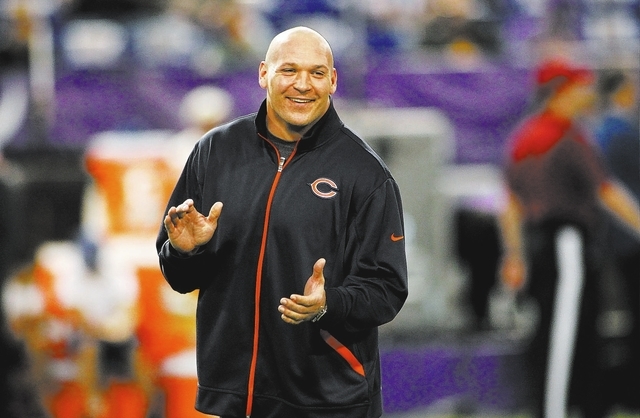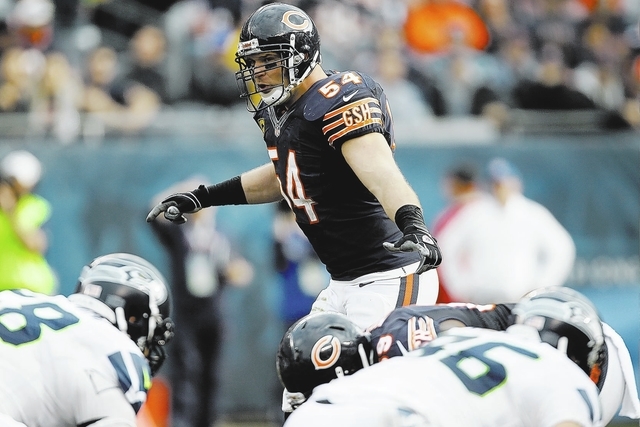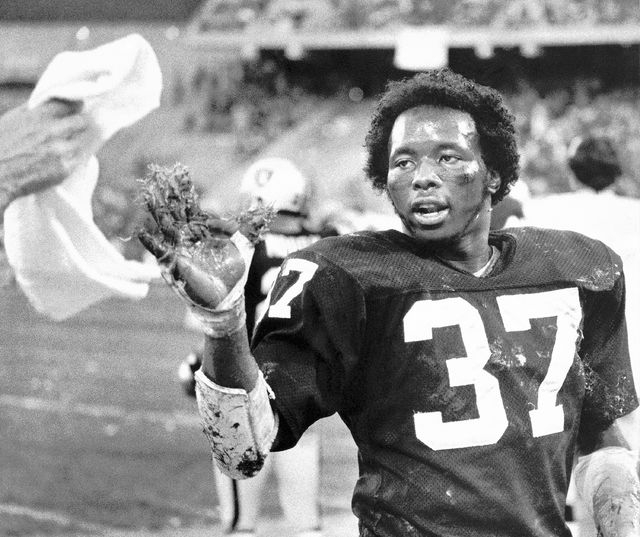Faking inflicts injury on NFL
Does it fall under the guise of gamesmanship?
Should it be viewed in the same vein as flopping on a basketball court to draw a charge or stealing signs on a baseball field?
Perhaps. It just doesn’t make it right, is all.
Here we go again. One of the great debates in sports. That which is either disgracefully dishonest or merely gaining an advantage without breaking rules.
The difference between straddling or crossing a line.
Get used to it in football. Offenses aren’t getting any slower.
Chip Kelly has arrived in the NFL, which means the game as we know it in America is about to resemble your average Chelsea vs. Arsenal soccer match. Bodies writhing in pain everywhere.
Whether most of them are actually injured is another matter.
Brian Urlacher recently brought to light a defensive tactic that undoubtedly has been used for years. The former Bears linebacker spoke about how Chicago teams would designate a “fall guy” to help slow the up-tempo attacks that now dominate playbooks.
Translation: A player would fake injury to stop the other guys from running a play every few seconds.
Instead of begging for oxygen, a lineman chose to pull a hamstring.
Sort of.
It’s happening in college, too. I blame Kelly for the entire mess because had he not been so innovative and stubborn about demanding his teams at Oregon play at warp speed every snap, not as many players would be dropping to the ground and buying time for a breather without their team having to burn a timeout. Kelly now coaches the Philadelphia Eagles. Get ready to see lots of Cowboys and Giants and Redskins coming up lame.
I was fairly certain UNLV pulled the trick a few times against Arizona on Saturday, but then the Rebels forgot to send out their punter for a punt and I immediately stopped giving the coaching staff credit for being creative.
I understand why defenses fake injuries, and yet at the same time despise the strategy nearly as much as I do when it happens in soccer, which has over time made a brilliant game far less enjoyable to watch.
There is a mindset that any advantage a team can secure is worth the gamble, that in the massive and wealthy enterprise that is the NFL, winning is beyond everything. I suppose it’s an acceptable view when your favorite team is getting boat-raced up and down the field, and it’s time for a defensive lineman to suffer some sort of sprain.
Which usually only keeps him out for one play, or until his teammates stop breathing as if they had just completed 200 jumping jacks on the peak of Mount Everest.
The NFL has spoken on the matter about as much as you can expect it to, reminding teams this week its “Competition Committee deprecates feigning injuries, with subsequent withdrawal, to obtain a timeout without penalty. Coaches are urged to cooperate in discouraging this practice.”
The league continues to threaten things such as unsportsmanlike conduct penalties and additional discipline for players and coaches after games. It uses big-boy words such as “deprecates” in statements.
But you have to believe its scope in enforcing the rule, along with those throwing yellow flags, is limited at best.
“It has been discussed by the league for years, but officials just can’t make that decision if a player goes down,” former NFL referee Jim Daopoulos said. “If he isn’t making an attempt to get off the field, we have a responsibility to stop the game. It becomes a liability situation. How can you say a guy is not hurt when he is on the ground?
“I still don’t know what the league can do about it. It occurs out there, but how can you tell a player how long he must stay out? I just don’t know how you control faking injuries. Unfortunately, I don’t think there is anything they can do about it.”
I suppose they could watch more film. Evaluate each time a defensive player goes down and how long he remains on the sidelines. Slow the tape and determine whether an injury really seemed to occur on a given play. But that’s a slippery slope of mostly guesswork.
Can anyone, with undisputed certainty, say whether another feels pain or not?
The Raiders once had a cornerback (Lester Hayes) who soaked his hands and uniform in Stickum before games. The San Francisco Giants drenched their infield in 1962 to slow base-stealing extraordinaire Maury Wills of the Dodgers. Australia won the America’s Cup in 1983 with a winged keel.
Here we go again. Gamesmanship or cheating?
I’m not sure it matters regarding faking injuries in football.
The tactic is here to stay or at least until Chip Kelly awakens one morning a disciple of Woody Hayes.
Las Vegas Review-Journal sports columnist Ed Graney can be reached at egraney@reviewjournal.com or 702-383-4618. He can be heard from 11 a.m. to 2 p.m. Monday through Friday on “Gridlock,” ESPN 1100 and 98.9 FM. Follow him on Twitter: @edgraney.



















